#All Boys Aren’t Blue and Gender Queer
Text
2 notes
·
View notes
Text

queernewsdaily feature!?!? <33333 ❤️🔥
"Looking for a great queer book to read this Pride month? This LGBTQ+ digital library is here to help you out.
The Queer Liberation Library (QLL) is an online-only resource housing more than 1,200 ebooks, according to NBC News. Its collection includes frequently banned texts like “Gender Queer” by Maia Kokabe, “This Book Is Gay” by Juno Dawson, and “All Boys Aren’t Blue” by George M. Johnson, as well as diverse books reflecting authors from a wide variety of backgrounds and experiences. The library, which is run by nine volunteers, was founded partially in response to the proliferation of anti-LGBTQ+ book bans across the country. Last year, 4,240 titles were targeted for removal in schools and public libraries in the United States, according to the American Library Association. Nearly half of those books — 47% — have LGBTQ+ themes. Fifteen states currently have laws restricting discussion of LGBTQ+ identities in school, and in Texas, Gov. Greg Abbott (R) signed a law in June 2023 that even forces private booksellers to put MPAA-like warning labels on books with alleged sexual content. (The law was eventually found to be unconstitutional.)"
help Queer Liberation Library thrive this coming year by meeting our fundraiser goal of ✨ $30,000 ✨ in cold, hard cash
1K notes
·
View notes
Photo
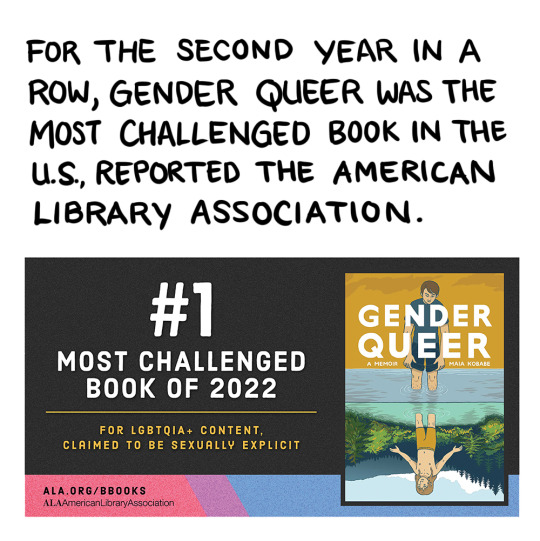
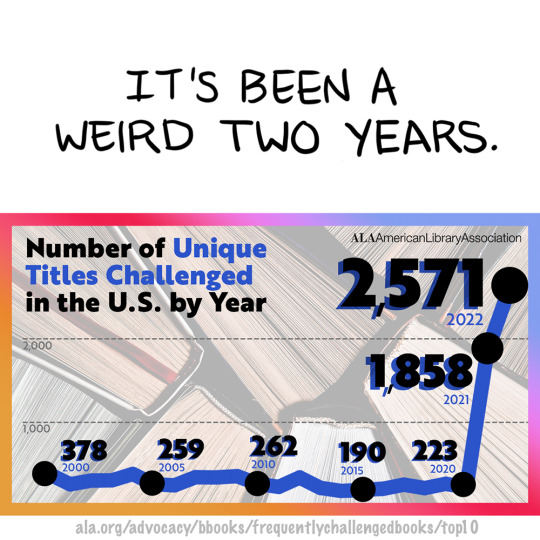

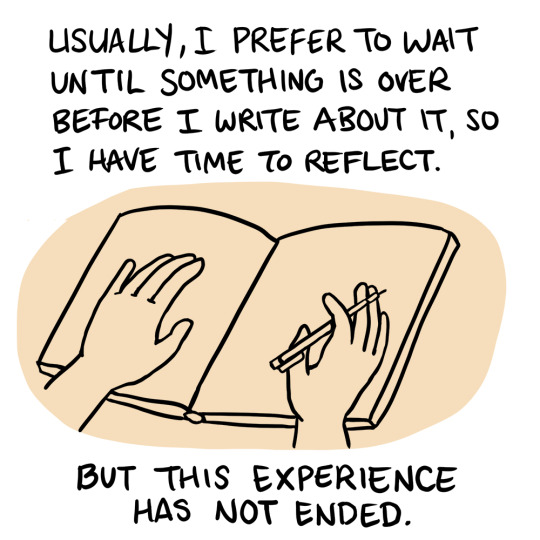
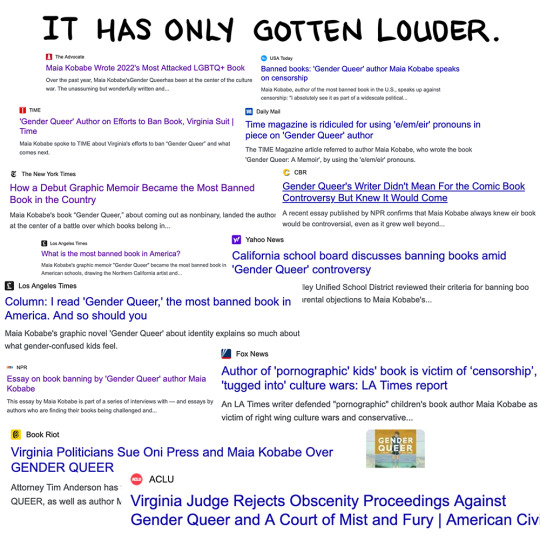
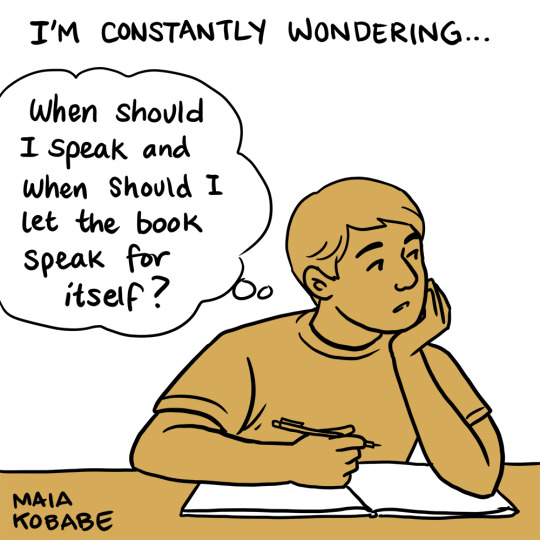
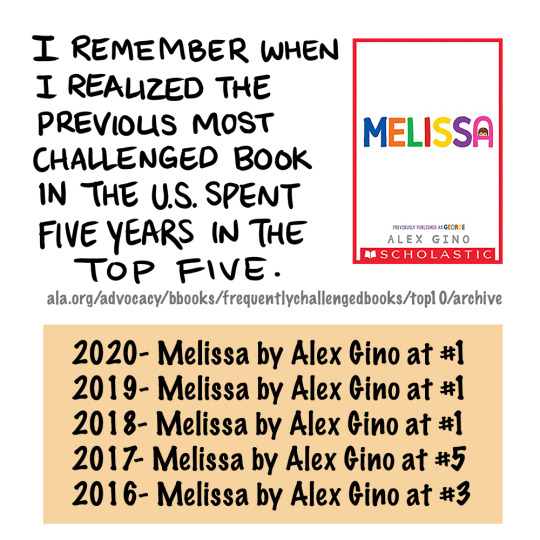

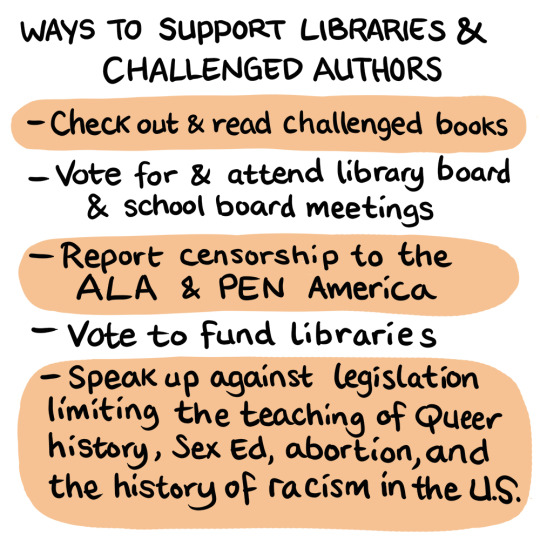

Transcript below the cut.
instagram / patreon / portfolio / etsy / my book / redbubble
Panel 1: For the second year in a row, Gender Queer was the most challenged book in the US, reported the American Library Association.
Panel 2: It’s been a weird two years. Number of unique titles challenged in the US by year. 2000: 378 titles. 2005: 259 titles. 2010: 262 titles. 2015: 190 titles. 2020: 223 titles. 2021: 1858 titles. 2022: 2571 titles.
Panel 3: It’s been a hard two years. The ACLU is tracking 469 anti-LGBTQ bills in the US.
Panel 4: Usually I prefer to wait until something is over before I write about it, so I have time to reflect. But this experience has not ended.
Panel 5: It has only gotten louder. (A series of screen shoots of news headlines about Gender Queer, book challenges and an obscenity lawsuit against the book being dismissed in the state of Virginia).
Panel 6: I’m constantly wondering, “When should I speak and when should I let the book speak for itself?”
Panel 7: I remember when I realized that the previous most challenged book spent five years in the top five.
2020- Melissa by Alex Gino at #1
2019- Melissa by Alex Gino at #1
2018- Melissa by Alex Gino at #1
2017- Melissa by Alex Gino at #5
2016- Melissa by Alex Gino at #3
Panel 8: Oh, I think I can take my time figuring out how to respond. I think I’m in this for the long haul...
Panel 9: Ways to support libraries and challenged authors: Check out and read challenged books. Vote for and attend library board and school board meetings. Report censorship to the ALA and PEN America. Vote to fund libraries. Speak up against legislation limiting the teaching of queer history, sex ed, abortion and the history of racism in the US.
Panel 10: Most challenged books of 2022:
1. Gender Queer: A Memoir by Maia Kobabe
2. All Boys Aren’t Blue by George M Johnson
3. The Bluest Eye by Toni Morrison
4. Flamer by Mike Curato
5. (tie) Looking For Alaska by John Green
5. (tie) The Perks of Being a Wallflower by Stephen Chbosky
7. Lawn Boy by Jonathan Evison
8. The Absolutely True Diary of a Part-Time Indian by Sherman Alexie
9. Out of Darkness by Ashley Hope Perez
10. (tie) A Court of Mist and Fury by Sarah J Maas
10. (tie) Crank by Ellen Hopkins
10. (tie) Me and Earl and the Dying Girl by Jesse Andrews
10. (tie) This Book is Gay by Juno Dawson
4K notes
·
View notes
Text
isaac's books in heartstopper s2
episode 1:

Tillie Walden: I Love This Part
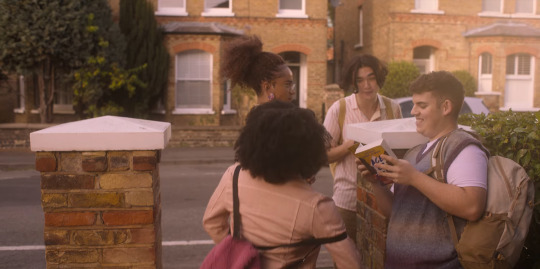
Faridah Àbíké-Íyímídé: Ace of Spades
episode 2:

Nina LaCour: We Are Okay
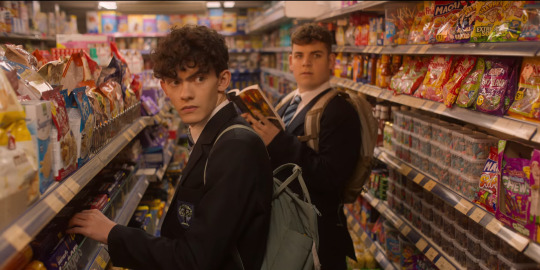
Oscar Wilde: The Importance of Being Earnest
episode 3:
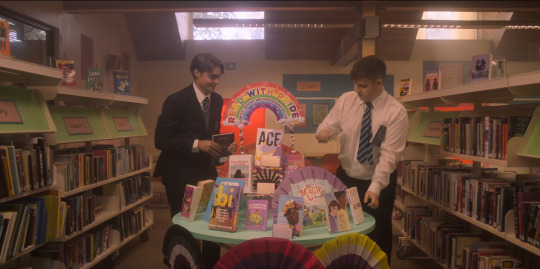
Ocean Vuong: Night Sky with Exit Wounds (the one he is carrying under his arm, I'm assuming that's his and not for the display?)

has read:
Ritch C. Savin-Williams: Bi: Bisexual, Pansexual, Fluid, and Nonbinary Youth

Emily Henry: Book Lovers
episode 4:

Victor Hugo: Les Misérables
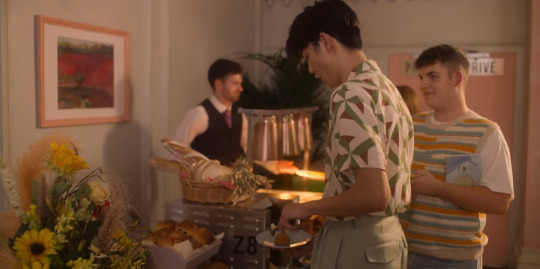
Antoine De Saint-Exupéry: The Little Prince

Kate Chopin: The Awakening

Nina LaCour: We Are Okay (again)
episode 5:

Albert Camus: The Outsider
episode 6:

Martin Handford: Where's Wally? The Great Picture Hunt

Meredith Russo: Birthday

Jules Verne: Around the World in Eighty Days

Sara Pennypacker: Pax
Anne Berest, Audrey Diwan, Caroline de Maigret, Sophie Mas: How to Be Parisian Wherever You Are
?
?
?
Damian Dibben: The Color Storm
Alice Oseman: Loveless
Susan Stokes-Chapman: Pandora
Katy Hessel: The Story of Art Without Men
?
Evelyn Waugh: Rossetti
Arthur Conan Doyle: The Hound of the Baskervilles
A.O. Scott: Better Living Through Criticism
?: Then We Came to an End (?)
Ruth Millington: Muse
Dr. Jaqui Lewis: Fierce Love
Charlotte Van Den Broek: Bold Ventures - Thirteen Tales of Architectural Tragedy
?

Richard Siken: Crush
episode 7:

Garrard Conley: Boy Erased

George Matthew Johnson: All Boys Aren't Blue

Samra Habib: We Have Always Been Here
episode 8:
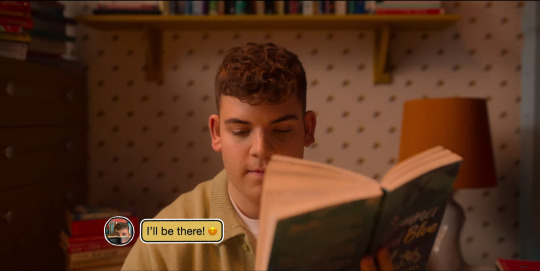
Akemi Dawn Bowman: Summer Bird Blue

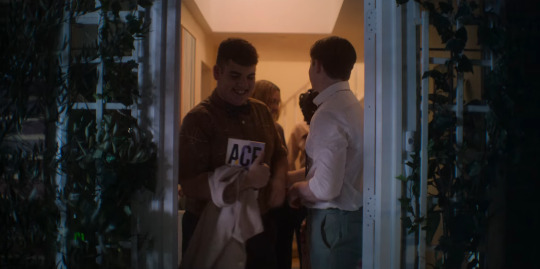
Angela Chen: Ace
bonus:

Truham school library pride display (seen in ep. 3 and 8):
top to bottom, left to right:
Angela Chen: Ace
Andrew Holleran: The Kingdom of Sand
Mary Jean Chan and Andrew McMillan: 100 Queer Poems
Scott Stuart: My Shadow Is Pink
Lotte Jeffs: My Magic Family
Tucker Shaw: When You Call My Name
Ritch C. Savin-Williams: Bi - Pansexual, Fluid, Nonbinary and Fluid Youth
Alok Vaid-Menon: Beyond the Gender Binary
George M. Johnson: All Boys Aren’t Blue
Mason Deaver: I Wish You All the Best
Alex Gino: George Melissa
on top of shelves (left to right):
Kevin Van Whye: Nate Plus One
Xixi Tian: This Place is Still Beautiful
Becky Albertalli: Leah on the Offbeat
Mya-Rose Craig: Birdgirl
Bernardine Evaristo: Girl, Woman, Other
Connie Glynn: Princess Ever After
Saundra Mitchell: The Prom
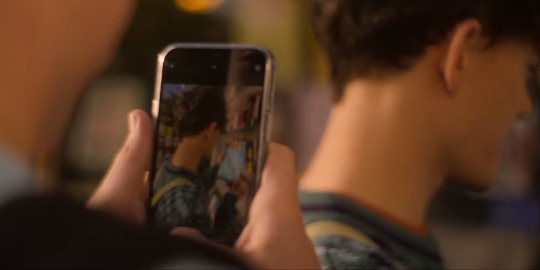
Charlie's choice at Shakespeare and Co (ep. 6):
Allan Hollinghurst: The Swimming Pool Library
That's it for now.
Sorry about the ones i couldn't identify and sorry if i missed any! Might try and do some of the ones in Isaac's room later but that'll take a minute
#hearstopper#heartstopper s2#isaac henderson#books#shakespeare and company#lgbt#charlie spring#alice oseman#aspec#aroace#aromantic#asexual#heartstopper season 2
232 notes
·
View notes
Text
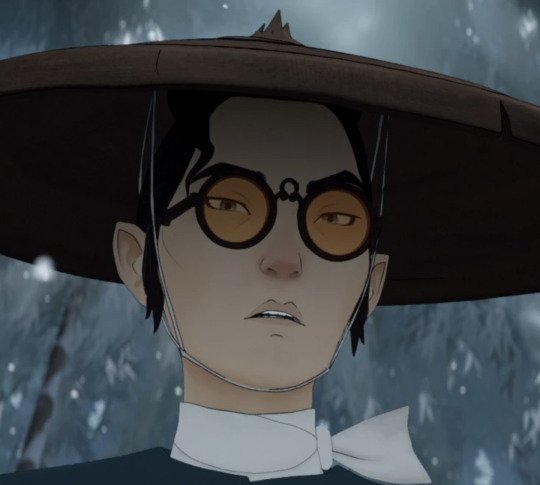
I watched all eight episodes of season 1 of Blue Eye Samurai over the weekend. I then went browsing because I wanted to read some online reviews of the show to see what people were thinking of it and also because I wanted to interact with gifs and art, as the series is visually stunning.
Yet, in my search for opinions on the show, I came across several points I'd like to address in my own words:
Mizu’s history and identity are revealed piece-by-piece and the “peaches” scene with Mizu and Ringo at the lake is intended to be a major character reveal. I think it’s weird that some viewers got angry over other viewers intentionally not gendering Mizu until that reveal, rather than immediately jumping to gender the character as the other characters in the show do. The creators intentionally left Mizu’s gender and sexuality ambiguous (and quite literally wrote in lines to lead audiences to question both) to challenge the viewer’s gut assumption that this lone wolf samurai is a man. That intentional ambiguity will lead to wide and ambiguous interpretations of where Mizu fits in, if Mizu fits in at all. But don't just take my word for this:

Re: above. I also think it’s weird that some viewers got upset over other viewers continuing to acknowledge that Mizu has a very complicated relationship with her gender, even after that reveal. Canonically, she has a very complicated relationship with her identity. The character is intended to represent liminality in identity, where she’s often between identities in a world of forced binaries that aren’t (widely) socially recognized as binaries. But, again, don’t just take my word for this:

Mizu is both white and Japanese, but she is also not white and not Japanese simultaneously (too white to be Japanese and too Japanese to be white). She’s a woman and a man. She’s a man who’s a woman. She’s also a woman who’s not a woman (yet also not quite a man). But she’s also a woman; the creators said so. Mizu was raised as a boy and grew into a man, yet she was born a girl, and boyhood was imposed upon her. She’s a woman when she’s a man, a man when she’s a man, and a woman when she’s a woman.
Additionally, Mizu straddles the line between human and demon. She’s a human in the sense she’s mortal but a demon in the sense she’s not. She's human yet otherworldly. She's fallible yet greatness. She's both the ronin and the bride, the samurai and the onryō. In short, it’s complicated, and that’s the point. Ignoring that ignores a large part of her internal character struggle and development.
Mizu is intended to represent an “other,” someone who stands outside her society in every way and goes to lengths to hide this “otherness” to get by. Gender is a mask; a tool. She either hides behind a wide-brimmed hat, glasses, and laconic anger, or she hides behind makeup, her dress, and a frown. She fits in nowhere, no matter the identity she assumes. Mizu lives in a very different time period within a very different sociocultural & political system where the concept of gender and the language surrounding it is unlike what we are familiar with in our every-day lives. But, again, don’t just take my word for this:

It’s also weird that some viewers have gotten upset over the fact women and queer people (and especially queer women) see themselves in Mizu. Given her complicated relationship with identity under the patriarchy and colonial violence, I think Mizu is a great character for cis-het women and queer folks alike to relate to. Her character is also great for how she breaks the mold on the role of a biracial character in narratives about identity (she’s not some great bridge who will unite everyone). It does not hurt anyone that gender-fluid and nonbinary people see themselves in Mizu's identity and struggle with identity. It does not hurt anyone that lesbians see themselves in the way Mizu expresses her gender. It does not hurt anyone that trans men see themselves in Mizu's relationship with manhood or that trans women can see themselves in Mizu when Mama forces her to be a boy. It's also really cool that cis-het women see themselves in Mizu's struggles to find herself. Those upset over these things are missing critical aspects of Mizu's character and are no different from the other characters in the story. The only time Mizu is herself is when she’s just Mizu (“…her gender was Mizu”), and many of the other characters are unwilling to accept "just Mizu." Accepting her means accepting the complicatedness of her gender.
Being a woman under the patriarchy is complicated and gives women a complicated relationship with their gender and identity. It is dangerous to be a woman. Women face violence for being women. Being someone who challenges sex-prescribed norms and roles under patriarchy also gives someone a complicated relationship with their identity. It is dangerous to usurp gender norms and roles (then combine that with being a woman...). People who challenge the strict boxes they're assigned face violence for existing, too. Being a racial or ethnic minority in a racially homogeneous political system additionally gives someone a complicated relationship with their identity. It is dangerous to be an ethnic minority when the political system is reproduced on your exclusion and otherness. They, too, face violence for the circumstances of their birth. All of these things are true. None of them take away from the other.
Mizu is young-- in her early 20s-- and she has been hurt in deeply affecting ways. She's angry because she's been hurt in so many different ways. She's been hurt by gender violence, like "mama's" misogyny and the situation of her birth (her mother's rape and her near murder as a child), not to mention the violent and dehumanizing treatment of the women around her. She's been hurt by racial violence, like the way she has been tormented and abused since childhood for the way she looks (with people twice trying to kill her for this before adulthood). She's been hurt by state-sanctioned violence as she faces off against the opium, flesh, and black market traders working with white men in contravention of the Shogun's very policies, yet with sanction from the Shogun. She's been hurt by colonial violence, like the circumstances of her birth and the flood of human trafficking and weapons and drug trafficking in her country. She's had men break her bones and knock her down before, but only Fowler sexually differentiated her based on bone density and fracture.
Mizu also straddles the line between victim and murderer.
It seems like Mizu finding her 'feminine' and coming to terms with her 'female side' may be a part of her future character development. Women who feel caged by modern patriarchal systems and alienated from their bodies due to the patriarchy will see themselves in Mizu. They understand a desire for freedom that the narrow archetypes of the patriarchy do not afford them as women, and they see their anger and their desire for freedom in Mizu. This, especially considering that Mizu's development was driven by one of the creators' own experiences with womanhood:
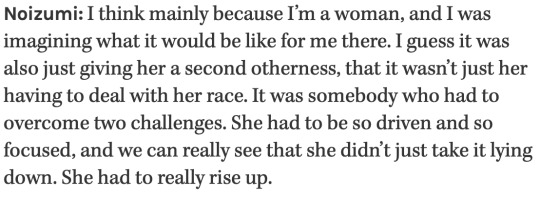
No, Mizu does not pass as a man because she "hates women" or because she hates herself as a woman or being a woman. There are actual on-screen depictions of Mizu's misogyny, like her interactions with Akemi, and dressing like a man is not an instance of this. Mizu shows no discomfort with being a woman or being seen as a woman, especially when she intends to pass herself as and present as a woman. Mizu also shows the women in the series more grace and consideration than any man in the show, in whatever capacity available to her socially and politically, without revealing herself; many of the women have remarked that she is quite unlike other men, and she's okay with that, too.
When she lives on the farm with Mama and Mikio, Mizu shows no discomfort once she acclimates to the new life. But people take this as conclusive evidence of the "only time" she was happy. She was not. This life was also a dance, a performance. The story of her being both the ronin and the onryō revealed to the audience that this lifestyle also requires her to wear a mask and dance, just as the bride does. This mask is makeup, a wedding dress, and submission, and this performance is her gender as a wife. She still understands that she cannot fully be herself and only begins to express happiness and shed her reservation when she believes she is finally safe to be herself. Only to be betrayed. Being a man is her safety, and it is familiar. Being a boy protected her from the white men as a child, and it might protect her heart now.
Mizu shows no discomfort with being known as a woman, except when it potentially threatens her goals (see Ringo and the "peaches" scene). She also shows no discomfort with being known as, seen as, or referred to as a man. As an adult, she seems okay- even familiar- with people assuming she's a man and placing her into the role of a man. Yet, being born a girl who has boyhood violently imposed upon her (she did not choose what mama did to her) is also an incredibly important part of her lived experience. Being forced into boyhood, but growing into a man anyway became part of who she is. But, being a man isn’t just a part of who she became; it’s also expedient for her goals because men and women are ontologically different in her world and the system she lives under.
She's both because she's neither, because- ontologically- she fits nowhere. When other characters point out how "unlike" a man she is, she just shrugs it off, but not in a "well, yeah, because I'm NOT a man" sort of way, but in an "I'm unlike anyone, period," sort of way. She also does not seem offended by Madam Kaji saying that Mizu’s more man than any who have walked through her door.
(Mizu doesn’t even see herself as human, let alone a woman, as so defined by her society. And knowing that creators have stated her future arc is about coming into her “feminine era” or energy, I am actually scared that this show might fall into the trope of “domesticating”/“taming” the independent woman, complete with an allegory that her anger and lack of human-ness [in Mizu’s mind] is a result of a woman having too much “masculine energy” or being masculine in contravention of womanness.)
Some also seem to forget that once Mama and Mikio are dead, no one knows who she is or where she came from. They do not have her background, and they do not know about the bounty on her (who levied the bounty and why has not yet been explained). After their deaths, she could have gone free and started anew somehow. But in that moment, she chose to go back to life as a man and chose to pursue revenge for the circumstances of her birth. Going forward, this identity is no longer imposed upon her by Mama, or a result of erroneous conclusions from local kids and Master Eiji; it was because she wanted people to see her as a man and she was familiar with navigating her world, and thus her future, as a man. And it was because she was angry, too, and only men can act on their anger.
I do think it important to note that Mizu really began to allow herself to be vulnerable and open as a woman, until she was betrayed. The question I've been rattling around is: is this because she began to feel safe for the first time in her life, or is this part of how she sees women ontologically? Because she immediately returns to being a man and emotionally hard following her betrayal. But, she does seem willing to confide in Master Eiji, seek his advice, and convey her anxieties to him.
Being a man also confines Mizu to strict social boxes, and passing herself as a man is also dangerous.
Mizu doesn't suddenly get to do everything and anything she wants because she passes as a man. She has to consider her safety and the danger of her sex being "found out." She must also consider what will draw unnecessary attention to her and distract her from her goals. Many viewers, for example, were indignant that she did not offer to chaperone the mother and daughter and, instead, left them to the cold, only to drop some money at their feet later. The indignity fails consider that while she could bribe herself inside while passing as a man, she could not bribe in two strangers. Mizu is a strange man to that woman and does not necessarily have the social position to advocate for the mother and daughter. She also must consider that causing small social stirs would distract from her goals and draw certain attention to her. Mizu is also on a dangerous and violent quest.
Edo Japan was governed by strict class, age, and gender rules. Those rules applied to men as well as women. Mizu is still expected to act within these strict rules when she's a man. Being a man might allow her to pursue revenge, but she's still expected to put herself forward as a man, and that means following all the specific rules that apply to her class as a samurai, an artisan (or artist), and a man. That wide-brimmed hat, those orange-tinted glasses, and her laconic tendencies are also part of a performance. Being a boy is the first mask she wore and dance she performed, and she was originally (and tragically) forced into it.
Challenging the normative identities of her society does not guarantee her safety. She has limitations because of her "otherness," and the transgression of sex-prescribed roles has often landed people in hot water as opposed to saving them from boiling. Mizu is passing herself off as a man every day of her life at great risk to her. If her sex is "found out" on a larger scale, society won’t resort to or just start treating her as a woman. There are far worse fates than being perceived as a woman, and hers would not simply be a tsk-tsk, slap on the wrist; now you have to wear makeup. Let's not treat being a woman-- even with all the pressures, standards, fears, and risks that come with existing as a woman-- as the worst consequence for being ‘found out’ for transgressing normative identity.
The violence Mizu would face upon being "found out" won’t only be a consequence of being a "girl." Consider not just the fact she is female and “cross-dressing” (outside of theater), but also that she is a racial minority.
I also feel like many cis-het people either ignore or just cannot see the queerness in challenging gender roles (and thus also in stories that revolve around a subversion of sex-prescribed gender). They may not know how queerness-- or "otherness"-- leads to challenging strict social stratifications and binaries nor how challenging them is seen by the larger society as queer ("strange," "suspicious," "unconventional," even "dishonorable," and "fraudulent"), even when "queerness" (as in LGBTQ+) was not yet a concept as we understand it today.
Gender and sexuality- and the language we use to communicate who we are- varies greatly across time and culture. Edo Japan was governed by strict rules on what hairstyles, clothes, and weapons could be worn by which gender, age, and social group, and this was often enshrined in law. There were specific rules about who could have sex with whom and how. These values and rules were distinctly Japanese and would not incorporate Western influences until the late 1800s. Class was one of the most consequential features to define a person's fate in feudal Japan, and gender was quite stratified. This does not mean it's inappropriate for genderqueer people to see themselves in Mizu, nor does this mean that gender-variant identities didn’t exist in Edo Japan.
People in the past did not use the same language we do today to refer to themselves. Example: Alexander The Great did not call himself a "bisexual." We all understand this. However, there is a very weird trend of people using these differences in language and cultures across time to deny aspects of a historical person's life that societies today consider taboo, whether these aspects were considered taboo during that historical time period or not. Same example: people on Twitter complaining that Netflix "made" Alexander The Great "gay," and after people push back and point out that the man did, in fact, love and fuck men, hitting back with "homosexuality wasn't even a word back then" or "modern identity didn't exist back then." Sure, that word did not exist in 300s BCE Macedonia, but that doesn't mean the man didn't love men, nor does that mean that we can't recognize that he'd be considered "queer" by today's standards and language.
Genderqueer, as a word and as the concept is understood today, did not exist in feudal Japan, but the people did and feudal Japan had its own terms and concepts that referred to gender variance. But while the show takes place in Edo Japan, it is a modern adult animation series made by a French studio and two Americans (nationality). Mizu is additionally a fictional character, not a historical figure. She was not created in a vacuum. She was created in the 21st century and co-written by a man who got his start writing for Sex in the City and hails from a country that is in the midst of a giant moral panic about genderqueer/gender-variant people and gender non-conforming people.
This series was created by two Americans (nationality) for an American company. In some parts of that country, there are laws on the book strictly defining the bounds of men and women and dictating what clothes men and women could be prosecuted for wearing. Changes in language and identity over time mean that we can recognize that if Mizu lived in modern Texas, the law would consider her a drag performer, and modern political movements in the show creators' home country would include her under the queer umbrella.
So, yeah, there will also be genderqueer people who see themselves in Mizu, and there will be genderqueer fans who are firm about Mizu being queer to them and in their “headcanons.” The scene setting being Edo Japan, does not negate the modern ideas that influence the show. "Nonbinary didn't exist in Edo Japan" completely ignores that this show was created to explore the liminality of modern racial, gender, class, and normative identities. One of the creators was literally inspired by her own relationship with her biracial identity.
Ultimately, the fact Mizu, at this point in her journey, chooses to present and pass as a man and the fact her presented gender affects relationship dynamics with other characters (see: Taigen) gives this story a queer undertone. And this may have been largely unintentional: "She’s a girl, and he’s a guy, so, of course, they get together," < ignoring how said guy thinks she’s a guy and that she intentionally passes herself as a guy. Audiences ARE going to interpret this as queer because WE don’t live in Edo-era Japan. And I feel like people forget that Mizu can be a woman and the story can still have queer undertones to it at the same time.
#Blue Eye Samurai#‘If I was transported back in time… I’d try to pass myself off as a man for greater freedom.’#^^^ does not consider the intersection of historically queer existence across time with other identities (& the limitations those include)#nor does it consider the danger of such an action#I get it. some come to this conclusion simply because they know how dangerous it is to be a woman throughout history.#but rebuking the normative identities of that time period also puts you at great risk of violence#challenging norms and rules and social & political hierarchies does not make you safer#and it has always been those who exist in the margins of society who have challenged sociocultural systems#it has always been those at greatest risk and who've faced great violence already. like Mizu#Anyway... Mizu is just Mizu#she is gender queer (or gender-variant)#because her relationship with her gender is queer. because she is gender-variant#‘queer’ as a social/political class did not exist. but people WE understand as queer existed in different historical eras#and under different cultural systems#she’s a woman because queer did not exist & ‘woman’ was the sex caste she was born into#she’s also a woman because she conceptualizes herself as so#she is a woman AND she is gender-variant#she quite literally challenges normative identity and is a clear example of what sex non-conforming means#Before the actual. historic Tokugawa shogunate banned women from theater#there were women in the theater who cross-dressed for the theater and played male roles#so I’m also really tired of seeing takes along the lines of: ‘Edo Japan was backwards so cross dressers did’t exist then!’#like. please. be more transparent won’t you?
21 notes
·
View notes
Text
Books good: all my 5 star reads of 2023

I didn’t realize before starting Jade Shards how much I missed The Green Bone Saga’s characters! It was such a treat getting more of their background. A reread of the whole series is imminent!
TJ Powar Has Something to Prove was so addictive I listened to the audiobook in one sitting. It was the perfect funny, light-hearted contemporary read.
I expected to like Tiger, Tiger, but not to completely fall in love with it! I had to immediately catch up with the webcomic after I finished book one. These characters are everything to my pirate rotten brain.

Ten Thousand Stitches was just as sweet and charming as Half a Soul, the first book in the series. Olivia Atwater is simply becoming one of my favorite authors.
Obviously, after reading it for the third time, The Unspoken Name remained the best book to be ever written. I’m forever grateful for this book’s world-building, simultaneously dark and hilarious story telling and the best queer found family of idiots.
The Sword of Kaigen was a surprise new favorite, with its amazing characters, complex family dynamics and stunning fighting scenes.

Imogen, Obviously was another cute and funny contemporary. A clueless, idiot teenager who thinks she isn’t even allowed to be queer? Not something that speaks to me though. Nope.
I rarely rate non fiction books, but I had to give all the stars to All Boys Aren’t Blue. It was a super emotional and interesting read.

Hey, it’s Olivia Atwater again! A gender fluid fallen angel tempting humans and stealing chocolate was all it took to make Small Miracles the sweetest romance.
Far From the Tree was another addictive audiobook I finished in one sitting. I enjoyed the complex family dynamics and totally get the comparisons with the This is Us tv show.
Ellen Outside the Lines was a delightful middle-grade story, about an autistic kid making friends and trying out new pronouns. I also had a great time mentally revisiting Barcelona—where I briefly lived—along with the MC!

After the second season of the tv series starring my emotional support angels, I had to reread Good Omens! This book has been one of my favorites for fifteen years and it’s still as funny and feel good as the first time I read it.
Moonstruck was such a stunning, sweet and funny graphic novel about mythical creatures navigating life—and at some point a magician trying to steal their powers.
In Other Lands was another addictive read. I loved the characters and magic school setting.
#26 five star reads is actually not too bad#i still plan to read heartstopper 5 this week and it would probably have made it into the list haha#books#booklr#book list
21 notes
·
View notes
Text
Greg Owen at LGBTQ Nation:
In San Francisco’s Castro District, a one-woman army is battling book bans — with books.
In May 2023, Becka Robbins decided the best way to fight back against the unprecedented onslaught of book bans was to get those banned books into the hands of the people being denied access.
She set up shop in a small room at the back of Fabulosa Books in the Castro and established her “Books Not Bans” program which sends banned books out to community centers, schools, and individuals across the country. The program has taken off with the help of customer donations.
“The book bans are awful, the attempt at erasure,” Robbins told the Associated Press.
Robbins has sent out 740 books so far to states including Florida, Texas, Oklahoma, and Alabama. Enthusiastic supporters are including notes of support with their donations, she said.
Over 40% of all book bans in the 2022-23 school year were in Florida, followed by Texas and Missouri, according to the free-speech and anti-censorship organization PEN America.
Approximately 86% of book bans were instigated by groups like Moms for Liberty, which has provided book lists to chapter members across the country, singling out the same titles over and over again.
Those include Maia Kobabe’s Gender Queer, George Johnson’s All Boys Aren’t Blue, and Nobel laureate Toni Morrison’s The Bluest Eye, among others.
PEN America says 30% of all book bans have targeted titles with LGBTQ+ characters or themes, while 30% have targeted books with characters of color or discussions of race and racism.
Nearly 40% of the bans sought by Moms for Liberty have targeted LGBTQ+ identity, according to the American Library Association’s Office for Intellectual Freedom.
San Francisco woman Becka Robbins found a way to fight back against book bans that are disproportionately aimed at books with LGBTQ+ themes or discussion of racism and race-related themes with a program called Books Not Bans.
11 notes
·
View notes
Text
School Book Bans of 2021-22

A lot of the banned books lists I see online are rather outdated or in some cases flat-out wrong. So I wanted to put together something a bit more current. These are the most-banned books in U.S. schools from the 2021-22 school year:
Gender Queer: A Memoir by Maia Kobabe
All Boys Aren’t Blue by George M. Johnson
Out of Darkness by Ashley Hope Pérez
The Bluest Eye by Toni Morrison
The Hate U Give by Angie Thomas
Lawn Boy by Jonathan Evison
The Absolutely True Diary of a Part-Time Indian by Sherman Alexie
Me and Earl and the Dying Girl by Jesse Andrews
Crank by Ellen Hopkins
The Kite Runner by Khaled Hosseini
The subject matter of banned books included:
LGBTQ+ Themes, Protagonists, or Prominent Secondary Characters (41%)
Protagonists or Prominent Secondary Characters of Color (40%)
Sexual Content (22%)
Issues of Race/Racism (21%)
Themes of Rights/Activism (10%)
In other words, the books people were most actively banning -- the books they're most afraid of -- were books about non-straight, non-cis, non-white characters.
See https://pen.org/report/banned-usa-growing-movement-to-censor-books-in-schools/ for more information, or for your recommended reading list.
44 notes
·
View notes
Text
Books Read in 2023 - If you're curious about any of them, please ask! I love talking about books
Rebecca (Daphne du Maurier)
Introduction to American Deaf Culture (Holcomb)
The Colour of Magic (Pratchett)
The Autistic Trans Guide to Life
Luda (Morrison)
The Moon is a Harsh Mistress
Genderqueer: Voices From Beyond the Sexual Binary
The Mask of Benevolence: Disabling the Deaf Community
Between Two Worlds (Sinclair)
Under the Skin (Faber)
When Time Stopped: A Memoir of My Father’s War and What Remains
Cat on a Hot Tin Roof
Portnoy’s Complaint
Being Heumann: An Unrepentant Memoir of An Disability Rights Activist (Judith Heumann)
Sex at Dawn: The Prehistoric Origins of Modern Sexuality
This is Moscow Speaking (Arzhak/Yuli Markovich Daniel; tr by Stuart Hood, Harold Shukman, John Richardson)
The Call-Girls (Koestler)
The Essential Dykes to Watch Out For
Homintern
A Scanner Darkly
The Trauma of Caste (Soundararajan)
Shards of Honor (Bujold)
The Origin of Virtue
Odd Girls and Twilight Lovers
Dreadnought
Children of the Arbat (Rybakov; tr by Harold Shukman)
The Gay Metropolis: The Landmark History of Gay Life in America
Janissaries (Jerry Pournelle)
The Disability Studies Reader (Davis)
Fat Off, Fat On: A Big Bitch Manifesto
The Book of Dust: The Secret Commonwealth
Inseparable (de Beauvoir)
World’s End (T. Coraghessan Boyle)
American Melancholy (Joyce Carol Oates)
Transgender Children and Youth (Nealy)
Disgrace (Coetzee)
The Light Around the Body (Bly)
The Hangman’s Daughter (Pötzsch)
Encounters: Two Studies in the Sociology of Interaction (Goffman)
The Trouble with Tink (Thorpe)
Gender Advertisements (Goffman)
And the Band Played On
Fairy Dust and the Quest for the Egg
The Trouble with Normal: Sex, Politics, and the Ethics of Queer Life
Old Norse Poems: The Most Important Non-Skaldic Verse Not Included in the Poetic Edda (tr. by Hollander)
Arts of the Possible: Essays and Conversations (Rich)
Ladies Almanack (Barnes)
Over the Hill (Copper)
Fairy Haven and the Quest for the Wand
The Poetic Edda (tr. by Bellows)
Paris Peasant (Aragon, tr. by Taylor)
Open Borders: The Science and Ethics of Immigration
Stigma (Goffman)
Rubyfruit Jungle
Fairies and the Quest for Never Land
Sight Unseen (Kleege)
The Homosexuality of Men and Women (Hirschfeld, tr. by Lombardi-Nash)
Bea Wolf
New Selected Stories (Thomas Mann, tr. by Searls)
Gay Bar (Jeremy Atherton Lin)
Patsy Walker, AKA Hellcat
Treatise on Style (Aragon, tr. by Waters)
Diana (Frederics)
The World I Live In (Keller)
Christopher and His Kind (Isherwood)
Put Out More Flags (Waugh)
Reflections of a Nonpolitical Man (Mann; tr. and introduced by Morris, Lilla, Rainey)
On Our Own (Judi Chamberlin)
All Boys Aren’t Blue
Artemis (Weir)
Goethe und die Demokratie
Dress Codes (Howey)
Mrs. Stevens Hears the Mermaids Singing
Forms of Talk (Goffman)
Sister Gin
The Decameron (Boccaccio; tr. by Musa and Bondanella)
Elric of Melniboné (Moorcock)
Paradiso (tr. by Hollander and Hollander)
My Mistress’ Eyes are Raven Black
Mademoiselle de Maupin (Gautier)
The Magic Mountain (Mann, tr. by Lowe-Porter)
Home to Harlem (McKay)
The Sailor on the Seas of Fate (Moorcock)
#books#books read in 2023#book reading#my reading list actually got longer this year#again#it's over 11 pages long#and some of the entries are just authors I want to check out
5 notes
·
View notes
Text
Follow up to the post about “banned” books:
For all my book banning needs my first stop is the American Library Association (ALA) website. To my mind they are at the forefront of protecting the First Amendment rights of Americans by defending writers and publishers from having their books removed from circulation.
Furthermore librarians are veddy good at keeping records and churning out statistics.
Every year the ALA publishes a list of the books that have had their appropriateness publicly questioned. Here is the most recent list currently available.
Top 10 Most Challenged Books of 2021
The ALA Office for Intellectual Freedom tracked 729 challenges to library, school, and university materials and services in 2021. Of the 1597 books that were targeted, here are the most challenged, along with the reasons cited for censoring the books:
Gender Queer by Maia Kobabe
Reasons: Banned, challenged, and restricted for LGBTQIA+ content, and because it was considered to have sexually explicit images
Lawn Boy by Jonathan Evison
Reasons: Banned and challenged for LGBTQIA+ content and because it was considered to be sexually explicit
All Boys Aren’t Blue by George M. Johnson
Reasons: Banned and challenged for LGBTQIA+ content, profanity, and because it was considered to be sexually explicit
Out of Darkness by Ashley Hope Perez
Reasons: Banned, challenged, and restricted for depictions of abuse and because it was considered to be sexually explicit
The Hate U Give by Angie Thomas
Reasons: Banned and challenged for profanity, violence, and because it was thought to promote an anti-police message and indoctrination of a social agenda
The Absolutely True Diary of a Part-Time Indian by Sherman Alexie
Reasons: Banned and challenged for profanity, sexual references and use of a derogatory term
Me and Earl and the Dying Girl by Jesse Andrews
Reasons: Banned and challenged because it was considered sexually explicit and degrading to women
The Bluest Eye by Toni Morrison
Reasons: Banned and challenged because it depicts child sexual abuse and was considered sexually explicit
This Book is Gay by Juno Dawson
Reasons: Banned, challenged, relocated, and restricted for providing sexual education and LGBTQIA+ content.
Beyond Magenta by Susan Kuklin
Reasons: Banned and challenged for LGBTQIA+ content and because it was considered to be sexually explicit.
Fortunately for us, the ALA is unparalleled in record-keeping book challeges. Unfortunately, perhaps one day perhaps their excellence will one day extend to their accessibility. There’s a wealth of great info on their site about book banning attempts, proposed legislation, Banned Books Week, and other goodies. Good luck finding it!😅
(Insert the more you know)
16 notes
·
View notes
Text
Have a doc filled with Mario headcanons and wanted to share the sexualities part because fuck it, it’s still pride month.
Disclaimer since it’s relevant to this post : I headcanon that Peach, Daisy, Wario and Waluigi are all creatures from the world of the Mushroom Kingdom who look the way they do due to magic gems (those blue and green gems that Peach and Daisy have respectively). Peach is a Toad, Daisy is a Dino-Rhino (unless those flower people from Mario Bros acid trip Wonder are from her Kingdom, then again I like Daisy being a giant cool Dino, plus the trailer for Wonder showed several other big animals), not sure for Wario and Waluigi but they’re not humans. The Super Crown works the way it does because there’s one of those gems in it.
Also, since it’s briefly mentioned, what I call the “main” continent is made out of the Mushroom, Koopa, Bomb-omb, Thwomp, and Goomba kingdoms. Sarasaland (retconned into Flower Kingdom now ?) and other kingdoms are on other continents (yes I know in Superstar Saga the Beanbean kingdom is neighbors with the Mushroom. But since they never appear in other games, I’ve chosen to ignore that detail).
Anyways, onto the headcanons :
- Mario : Transmasc Aromantic Heterosexual ; he realized he’s aro after finding out Peach is a Toad and losing sexual interest in her (felt bad about it at first because he thought he fell out of love upon discovering Peach at her most vulnerable, Bowser made it worse for him by accusing him of liking her only due to her human form) ; him being transmasc is why he’s named Mario Mario (he thought it would be funny)
- Luigi : Cis Bisexual ; had a fling with Peasley + loves Daisy ; he’s gender non-conforming and sometimes shares clothes with Peach, he also trains his voice to be higher-pitched for the heck of it (+ it can help in case he has to take Peach’s place for a kidnapping)
- Peach : Demiromantic Pansexual ; is cis-passing in human form but is technically transfem due to being a Toad
- Bowser : Omnisexual ; Cis tho I like the idea of him being transmasc and birthing Junior’s egg
- Yoshi and Birdetta are T4T + poly (hence Birdetta flirting with others) ; Birdetta’s eggs aren’t actually eggs (insert joke about her “eggs” being white) ; not sure if “all Yoshis that lay eggs are female” but at least all those that lay eggs that can be fertilized are female (and on that note YOSHI MIGHT BE CANONICALLY TRANSMASC ???!!!) ; Yoshi is straight while Birdetta is plurisexual (bi/pan/omni etc)
- Daisy : Straight + intersex + transfem (imagine if Prince Haru from the 1986 movie was her appearance pre-transition, but remove the whole “Peach’s fiancé” part of the plot, or the plot as a whole since the events of this movie didn’t happen here, just keep Haru’s design as “Daisy before transitioning”)
- Big fan of the headcanon that Kamek is gay ; he doesn’t date because 1. He’s busy 2. He’s getting too old for this 3. He’s devoted to his son and grandchildren which takes all his free time
- Depending on which creature he is Wario would be cishet though I could also see him be plurisexual (bi/pan/omni/other label that has to do with dating more than one gender ; I like putting diversity in queer headcanons but I’m not the most knowledgeable on labels past the most common ones)
- Not sure for Rosalina, either aroace or she’s allo but just stays single due to her life situation ; probably non-binary (she/it, could also be a play on the fact that some see her as some kind of goddess)
- Pauline is Cis Lesbian and her and Mario parted on good terms after he came out as trans on top of other reasons (basically they still care a lot about each other but realized they were better off as friends, the whole “unknown aro + transmasc with lesbian” simply gave them an easier excuse to break up)
- Really not sure for Bowser's kids, the only ideas that are "set in stone" are that Ludwig is gay, Wendy is attracted to boys (doesn't meant she can't like girls), Lemmy is demi-boy (they/him) and Morton is attracted to girls (like Wendy it doesn't close the door for liking men).
Not sure for the rest, though I could see Iggy using he/neopronouns (likely xe/xem) and at least one of them being interesex. Btw the older kids say they don’t date because they’re busy with royal duties but the truth is they are just incredibly awkward + they can’t ask their dad for advice since he’s a romantic disaster
- I could see Toadsworth be aroace, since even in his younger years he cared more about raising his surrogate daughter than dating + he never pressures Peach into marrying ? In general he doesn’t seem to care about romance ? ; he’s also transmasc because Toad
- After seeing Bowser’s Inside Story and the beginning of Dream Team, Starlow is a lesbian crushing on Peach (is very buddy-buddy with Peach despite barely knowing her, makes a big deal out of Peach being kept safe, calls her “Peach” instead of “Princess” from the get go, at times seems to see Peach as the best person in the room)
- Toads and Goombas are naturally agender because mushrooms ; some choose to express a specific gender (ex Toadsworth, Toadette, Peach, the Toads and Goombas from the first two Paper Mario) ; some may use gendered pronouns even if their presentation doesn’t display any specific gender (ex Captain Toad using he/him despite looking like any other Toad) ; basically every Toad/Goomba that use gendered pronouns (or neopronouns) is technically trans and/or non-binary ; cisgender Toads/Goombas go by they/it ; the Super Crown gem gives the shape the Toad see themselves as but it doesn’t have to be cis-passing or even gender conforming, can be androgyne (Daisy took a while to figure herself out, hence her gem giving her Haru’s look at first ; she's not from an agender species but the way the gems work still applies to hers, hence mentioning how her being trans worked on that front)
- That previous point implies either all Toads have the same metabolism and thus all grow facial hair (Peach having to shave tho) or they have mushrooms that serves as HRT for those who want more “masculine” or “feminine” traits (hair/facial hair and tone of voice) ; the color of their hats has nothing to do with gender for Toads (ignore Nintendo’s weird obsession with making every female character in the Mario franchise pink)
- Sexual dimorphism in general is very rare/limited in this world (only the Beanbean kingdom has it ?), in “main” continent, Koopas are the ones where it’s the most present and even then it’s very minimal (genitals, who can lay eggs, possibly size but even then not really since Pom Pom is the only one smaller than her male counterpart, Wendy and other female Koopas aren’t particularly small)
- Toads (and other species) experimenting with gender could be due to seeing Koopas make the distinction between “male” and “female” and finding the idea of changing your appearance based on how you feel to be fun (even though you have the concept of male and female Koopas, there’s no transphobia in Bowser’s kingdom) ; by that point it’s common for Toads to change however they feel and go by any pronouns they want, just because they’re aware of the concepts of masculinity and femininity doesn’t mean they have to follow it to the letter with their pronouns unless they want to
- On that note, I could see Toadette as genderfluid, though she most often goes by she/her ; I could also see one or several of the other main Toads (Ala Gold, Bucken Berry, Captain Toad, "The" Red ToadTM) be bi-gender
- Not sure what’s going on with Waluigi but he’s definitely queer
#Super Mario#Mario headcanons#queer headcanons#long post#Flor talks#not tagging all the characters; no thank you#you have no idea how much back and forth I did with some of these headcanons to put as much diversity as possible with my limited knowledge#and for some like Bowser's kids; I'm still heavily undecided#(I REALLY need to read more about more obscure labels...)#for example: I didn't know who to make as a lesbian aside from Pauline but she's Mario's gf at some point so it wouldn't work#and then I saw comics of both Mario brothers being trans and fell in love with the idea of transmasc Mario#which makes the whole thing with Pauline very convenient#also I tried to balance having a few cishet people in there as well because as weird as it might be to say on a queer-heavy website#in a perfect world; there would be no difference between cishet and queer; so I had to put a few here#on that note; I love how at first I was worried maybe I was making too many cis characters#all the while basically going 'EVERY SINGLE TOAD WE EVER MET IS TRANS'#(btw the whole gender 'fuckery' with the Toads is my favorite headcanon out of all of them#they're just little guys vibing; dressing up the way they want and using the pronouns they want :) )
3 notes
·
View notes
Text
Love, Ethan
Love, Simon follows high schooler Simon. He's in all ways a normal teenage boy except for the fact that he has a secret: he is gay. He's then informed by a friend, Leah, that there is a gay student at their high school as they had anonymously posted on the towns website his coming out under the name "Blue". Simon emails the anonymous student to inform him that he's also gay. Things take a turn for the worse when a classmate named Martin figures out Simon's secret and blackmails him by telling him he will out Simon to everyone if he doesn't score him a date with with a friend named Abby. Despite succeeding, at least until Abby rejects his grand gesture in front of the school, Simon and "Blue's" emails have been leaked, outing Simon. At the end of the movie Simon and "Blue" finally meet and their lives continue on as normal.
While Simon is the main character of the movie, he is not the main character of this analysis. It's instead about a minor character named Ethan. Ethan is openly gay and highly feminine. His character is essentially a mockery of feminine gay men. To make this insult of a character worse, Ethan did not exist in “Simon vs. The Homo Sapiens Agenda,” the book Love, Simon is based on, to give an extreme contrast of Simon. His character's real main purpose is to show the cis straight audience that gay men are actually normal, regular people who are seemingly heteronormative and straight passing, much like Simon, and not obnoxiously flamboyant people who feel the need to shove their sexuality in your face.
In many ways, Simon is privileged. He is a white, upper middle class man. His only real “disadvantage” is that he’s gay. However, the way he portrays his gayness, both before and after coming out, is very typically masculine and straight passing. His queerness is reduced to passing as straight and proving how much like everyone else he is. When Simon comes out to his parents, he is validated. His mother tells him that he is still him and his father apologizes for having ever made jokes, which were more like snide remarks and digs at the queer community, as he never knew how it had affected him. The most important part of his parents validation and acceptance is his mother. She emphasizes that he is still Simon which proves he is still normal and the “acceptable” type of gay.
youtube
Ethan, however, is a gay black boy. In many ways he is less privileged. Even following the bullying in the cafeteria, Ethan then explains to Simon that being gay isn’t as easy for him as everyone assumes. He tells Simon that his mother tells his grandparents about all the girls he’s dating rather than just telling them he’s gay as she believe’s it’s easier for everyone. This is a vastly different amount of support than seen in Simon’s family. Ethan does not have the same type of validation. While his mother may seemingly be okay with his sexuality, she clearly does not view him as “acceptable” as she feels the need to hide it from his grandparents.
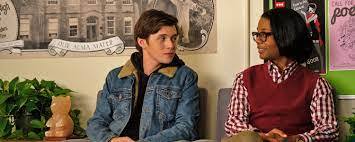
Everything about Ethan’s queerness is established to be a joke to everyone around him. His small group of friends that he comes out to all feigns surprise. This completely diminishes what the act of coming out is. It implies that obviously his friends and everyone knew he was gay prior to even coming out and that it’s a redundant, even unnecessary, thing for him to do as it was so clearly obvious. The only thing that makes it “obvious” is the fact that he doesn’t act in a traditionally masculine way. Sociologist Michael Kimmel had found there are four basic rules of masculinity. The first, and arguably most important rule, is “no sissy stuff.” This means that men who act femininely aren’t real men or are less of a man than his peers. Due to this, masculinity is preformed by men for other men (Kimmel, 2001, “Gender Equality: Not for Women Only” speech). Ethan’s rejection of traditional masculinity and the most important rule furthers this idea that feminine gay men aren’t “normal” gay men.
youtube
Due to his own idealization of being “normal,” Simon’s non-assuming queerness isn’t threatening towards the straight audiences. Ethan, however, is the personification of the uncomfortable feelings towards gay people that straight audiences feel. His queerness, like Simon’s, isn’t his only defining personality trait. However, because he is openly gay, more feminine, and more flamboyant, it became his defining trait. Even in his own post-high school gay fantasy, Simon clarifies that he won’t be “that gay.” Meg-John Barker and Julia Scheele introduce the idea of anti-identity politics in their book “Queer: A Graphic History.” They explain that “fixing can lead to people feeling inflexible and unable to change, or being seen as only one part of themselves and not all that they are” (Barker & Scheele, 2016, p. 16). Simon’s inability to see himself both as normal and as gay simultaneously causes these feelings of internalized homophobia. This negatively affects Ethan.
youtube
Simon’s internalized homophobia victimizes Ethan because he full heartedly believes that Ethan makes it too easy for bullies to target him. Rather than thinking the bullies shouldn’t target the only openly gay student, he thinks that Ethan should instead be more low key and implies that he has brought this on himself. Jacob Tobia wrote an article for The New York Times entitled “Does Gay Hollywood Have Room for Queer Kids” in which he stated “I was that flamboyant gay kid who made everyone else look bad by association…the irony is that these very gay men were allowed to be “normal” because I was the campus freak” (Tobia, 2018, The New York Times). Ethan falls victim to being the freak, both of the campus and the movie, which makes Simon look normal and palatable.
Moreover, Ethan is constantly the victim of homophobic bullies. Simon himself says that Ethan makes it too easy to be bullied by them. However, not one person speaks up against the bullies until Simon becomes a second target. There’s this amount of privilege Simon has for being white and a “non-threatening” gay boy that causes the bullies to finally face repercussions. He even is praised for being gay at the end of the movie, something that hadn’t been seen for Ethan at all. Had Simon not been outed, Ethan would have continued to be the sole target. Either way, it shows a clear message that openly gay kids, even if they’re fictional characters, who are more feminine are more deserving of being bullied solely because they do not adhere to the idea of “normalcy.” Simon, who flaunts that he is just like everyone else, is rescued for being able to blend in with cis straight people.
youtube
All of this becomes extremely problematic as Love, Simon is meant to be a coming of age story for queer kids and uplift the community. However, the film clearly shows that there is a correct way to be gay and a wrong way to be gay. The correct way they show is to be like Simon: a normal teenager who does normal things with his friends and hides behind a facade of compulsive heteronormativity. The wrong way to be gay is to be like Ethan: a normal teenager who does normal things with his friends but who doesn’t feel the need to water down their own sexuality to make straight people more comfortable. As previously stated, Ethan’s characters entire purpose is too over exaggerate how queer gay people are to prove that not all gay people are that over the top. Alexander Doty explains in their book “Making Things Perfectly Queer” that “what queer reception does, however, is stand outside the relatively clear-cut and essentializing categories of sexual identity under which most people function” (Doty, 1993, p. 15). What this means is that queerness should be recognized for the complex spectrum it is rather than follow one specific outline every time. Love, Simon fails to do this as Ethan is continuously mocked and victim blamed for falling outside of the generic outline that Simon is praised for abiding by. Adding Ethan as a means to emphasize that gay men shouldn’t act that flamboyant or feminine teaches gay kids and straight people that there is only one way to be gay, which should be the way that is the most comfortable for non-gay people and audiences, as well as implies that only those who act like Simon deserve a good love story.
Resources:
Doty, A. (1993). Making Things Perfectly Queer.
Tobia, J. (2018). Does gay Hollywood have room for queer kids. The New York Times.
Barker, M., Scheele, J. (2016). Queer: A Graphic History.
Kimmel, M. (2001). Gender Equality: Not for Women Only.
9 notes
·
View notes
Text
It's Monday (fur mich), so it's Quote Day for the Raven Cycle Crew
"Cooties chair" - Ronan joking about sitting next to Blue at Nino’s
"The lore behind the anti-christ..." - Gansey
"I is pebble-sized" - Blue (OOC, but still)
"License to be stabbed" - Mr. Gray at his next target
"Polyamory, I got it" - Anyone one looking at the gang
"Someone gave the 1600s peasant McDonald's sprite" - Ronan after Gansey tried McDonald’s sprite
“I can be a whimsical slut” - Henry explaining his aesthetic
(like the vine) “Two bros, chilling in a tunnel, zero feet apart ‘cause there’s no room!” - everyone crammed into the tunnels looking for Glendower
“Bread is nature’s sponge” - Look I can just imagine Maura, at her wits end, saying this while attempting to sop up some like spilled tea in the wee hours of the morning
“Why is the sun so hot!?” - Henry
“They’ve already graduated from Yale, their lifespan is short” - Blue to Gansey at a formal function
“[Adam], I hate to break it to you but you’re bisexual” - Blue explaining queer terminology to Adam
“Who’s gonna be a flat fuck tonight?” - K at one of his parties
“They excluded me from boob talk so [I] gets bitches” - OOC for Declan, but he’s not the type to have that kind of conversation, and yet he’s known to have dated several people
“Look at all these gay people” - just about everyone in that series
“Grow a flower, yoink his coffee” - Ronan and Adam in the early morning in the kitchen of the Barns
“I’m white, you have to accommodate for my needs!” - What everyone thinks Gansey is going to be like
“Cars aren’t typically good for your immune system. Is that what they call an autoimmune disease?” - Ronan making jokes while watching Adam work
“Totluck!” - the women of 300 Fox Way deciding on dinner
“Twink, woman or non-binary: the three genders” - Noah, Orla, Blue I don’t take critique /j
“I need to change my kibble so I can have a shiny coat” - Self-care at the Barns
“I’m putting my whole drawussy into this image” - Just something Henry would say
“I’m enough abnormalities in a trench coat so that I seem normal” - Gansey
“A witch’s brew for bitches true!” - tea at 300 fox way, presented by Calla to Blue’s boys
“Um, it’s called lounging sweaty” - Ronan sprawled down the main street of Gansey’s mini Henrietta
“You need to stop worrying about all this government bug stuff, and start focusing on the real threat: trees!” - Ronan trying to bring Cabeswater to Gansey’s attention
“Not a crackED nail. Crack nail. Like for…crack” - K
“Eat clods nerds” - Ronan on a tractor, speeding away from Declan (Give my boy a tractor, he deserves it)
“'...megayman' - Adam having a realization, coming out to Blue
'...well halfway' - Blue again enlightening him about the wonders of bisexuality"
“I’m sorry, but I think you’re being kind of a bitch” - Blue at Ronan
(like a threat) “You’re real” - At Ronan
“TAXES, THOUGH” (said very loudly) - Blue causing drama at Gansey family functions
“[Ronan], your brother is trying to extort me” (In child tattling voice) - Adam
“Iscream…AH” - Noah
3 notes
·
View notes
Note
Banned books is a trending topic on tumblr atm.As a student of literature what's your take on it ?
That’s a great question! Thanks for asking it and giving me a chance to share my diatribe.
Yeah, it’s trending cuz the American library association just released their list of banned books for the year.
I think that banning books is VERY dangerous and a sign of socio-political oppression. Cuz, like, if you look at the list that ALA just put out, what’re you seeing?
“genderqueer” “All Boys Aren’t Blue,” “The Bluest Eye” etc. do you know what all these books have in common? They are solid, complex representations of marginalized voices that, at least in the US, are currently under threat. Women’s rights to their own bodily autonomy, trans rights to gender affirming healthcare, and queer expressions. Like, these books are not getting banned because they’re “hate speech” or some other reason. They just threaten the status quo, center voices other than cis, het, white men, and expose readers to realities beyond their own.
WHICH IS ONE OF THE MAJOR FUNCTIONS OF LITERATURE AS AN ART FORM!!!!
Second to being out in the world and interacting with their surroundings, kids will learn about otherness and get exposed to cultures, genders, social circumstances that differ from theirs through the art that they consume. Reading is EXTREMELY formative to young minds (and I would argue, even adult minds). So, by banning books like this, we are not only oppressing marginalized communities even more, by preventing them from being able to claim space and tell their own stories, we are creating the next generation of bigots by closing the minds of young people away from stories that can be different from their own.
You know what else? It doesn’t WORK! the way you raise thoughtful kids isn’t by putting them in a bubble away from any experiences that they’re not ready for. It’s by instilling the right values in them so that when they do encounter new, ‘weird,’ unfamiliar, or different ideas, they have the skills and the ability to react positively. You can’t just lock their minds up and throw away the key. That’s not gonna work. Anyone who has ever been a young kid and tried to do something behind their parents back will tell you this. It’s dumb and futile.
And don’t even get me started on a young queer, black, trans, etc kid who’s confused and lost and doesn’t have the words and feelings for what they’re experiencing who is now going to miss out on finding strength, community, compassion, or understanding that they WOULD have found had they been able to access and read these books and discover that 1. They are not alone and 2. There’s nothing wrong with them.
So, all in all, this is a ROYALLY FUCKED UP IDEA to censor literally. Not only that, but it’s a symptom of the larger white-supremacist mindset of our current society.
Thanks for coming to my Ted talk
3 notes
·
View notes
Text
Another banned book recommendation
All Boys Aren't Blue: A Memoir-Manifesto by George M. Johnson
In my attempt to read the top ten banned books in 2023 this year, I have finally finished All Boys Aren't Blue. This is a lovely collection of essays by George M. Johnson about the complexity of gender and race identities during those critical years between childhood and being a young adult. It is a short and straight forward read. There is frank discussion of identity, marginalization, consent, and joy. For Black queer boys, this book is potentially refreshing and empowering because it directly addresses them and their isolation. However, the book is also an important read for queer teens and allies in general.
All Boys Aren’t Blue was a Teen Vogue and a Buzzfeed recommended read in 2020, a People Magazine Best Book of the Summer 2020, A New York Library Best Book of 2020, a Chicago Public Library Best Book of 2020, and a 2020 nominee for the Goodreads Choice Award for Memoirs & Autobiographies. It was on the ALA Top 10 Rainbow Book List for 2021.
The book was the 2nd most banned book in 2023. It has been censored because it includes LGBTQIA+ content and profanity and because of claims that it is sexually explicit. There is discussion of bullying, consent, sexual abuse, two sexual encounters, and statutory rape. The book is written for teens and young adults and seems absolutely appropriate for that age group.


#all boys aren't blue#George M. Johnson#fuck book banning#books and reading#banned books#books#library activism#lgptqia+#book recommendations#lgbtq#glbt#glbtq
1 note
·
View note
Text
All Boys Aren't Blue (Audiobook)

All Boys Aren’t Blue is a memoir-manifesto written by George M Johnson, a journalist and LGBTQIA+ activist. The target age group for this book is young adults aged 14+. All Boys Aren’t Blue was ranked second on The ALA’s top 13 most challenged books of 2022. According to the ALA, Johnson's memoir was challenged because of “LGBTQIA+ content, claimed to be sexually explicit”.
In this memoir-manifesto, Johnson shares their personal experiences and journey from childhood to college. The book begins with Johnson’s earliest memory of experiencing physical violence for the first time and reflecting on the aftermath of the incident. The author discusses how this traumatic experience impacted other aspects of their life such as navigating their gender, racial, and sexual identities. Johnson’s story is broken up into four parts, each touching on significant stages of their life.
I chose to review this book because the author addresses important topics such as adolescent sex education for queer youth, racism, and homophobia in the Black community. Johnson’s story highlights the importance of intersectionality and is a source for POC who are exploring their sexuality. While this memoir was written and shared to help young adults in the LGBTQIA+ community, it reaches a larger audience and can educate all readers about the experiences of Black queer individuals.
For this review, I will be evaluating: Tone, Style & Language, and Format:
Tone: The author shared their story to reach a teen audience who might be navigating a similar experience in their own lives. However, I feel like the author’s tone came off as condescending. For example, when discussing the story behind their name the author expressed the importance of respecting others for their names and how they choose to identify. Johnson also attempts to educate the reader by explaining that they have the power to choose what they want to be called. I believe that this was a powerful message, but the author ended the statement by saying “I bet most of you never thought to ever question if you even like your name” which felt belittling. Even though this story lacked a tone of empathy, it was clear that the author was passionate about the subject matter of the book.
Style and Language: All Boys Aren’t Blue was written as a series of personal essays that is divided into four parts. While I appreciate how vulnerable the author was in sharing their story, it read more as a diary or a set of journal entries rather than an informational guide. This was an element that was difficult to evaluate because I listened to the audiobook which felt like I was listening to the author read from a journal or script rather than telling their story. There were also parts of the book where the author contradicted previous statements they had made. Moreover, Johnson lacked consistency and struggled to make connections when describing their experiences and feelings. For example, the author discussed their first traumatic experience with physical violence. The way they structured this significant moment made it seem as if it would be a full-circle moment that was connected to their sexuality, race, or gender identity. However, it was hardly mentioned after the first chapter and as a reader/listener, it left me wondering what prompted the boys in the story to “jump” Johnson.
Format: I decided to listen to the All Boys Aren’t Blue audiobook which is narrated by the author George M. Johnson. One thing I appreciated was hearing the author tell their story in their own words. I feel like this allowed the audience to hear and experience Johnson’s story the way Johnson wanted it to be heard. However, the author kept the same pace, tone, and personality throughout the entirety of the book. I believe that they could have changed the dialect and tone when they quoted their grandmother or when they discussed traumatic events. For example, at the beginning of the story, Johnson describes their grandmother as having a Southern accent even though she had lived in Jersey for 35 years, but when Johnson quotes their grandmother the dialect remains the same and lacks that Southern accent that they described. Moreover, the author discusses traumatic events with a matter-of-fact tone, where I expected them to show more emotion. Even though the audio version lacked inflection, hearing George Johnson tell their story evoked an emotional response within me as the listener.
References:
Collis. (2023, August 25). Top 13 most challenged books of 2022. Advocacy, Legislation & Issues.
Johnson, G. M. (2020). All boys aren’t blue: A memoir-manifesto. Farrar, Straus and Giroux.
0 notes